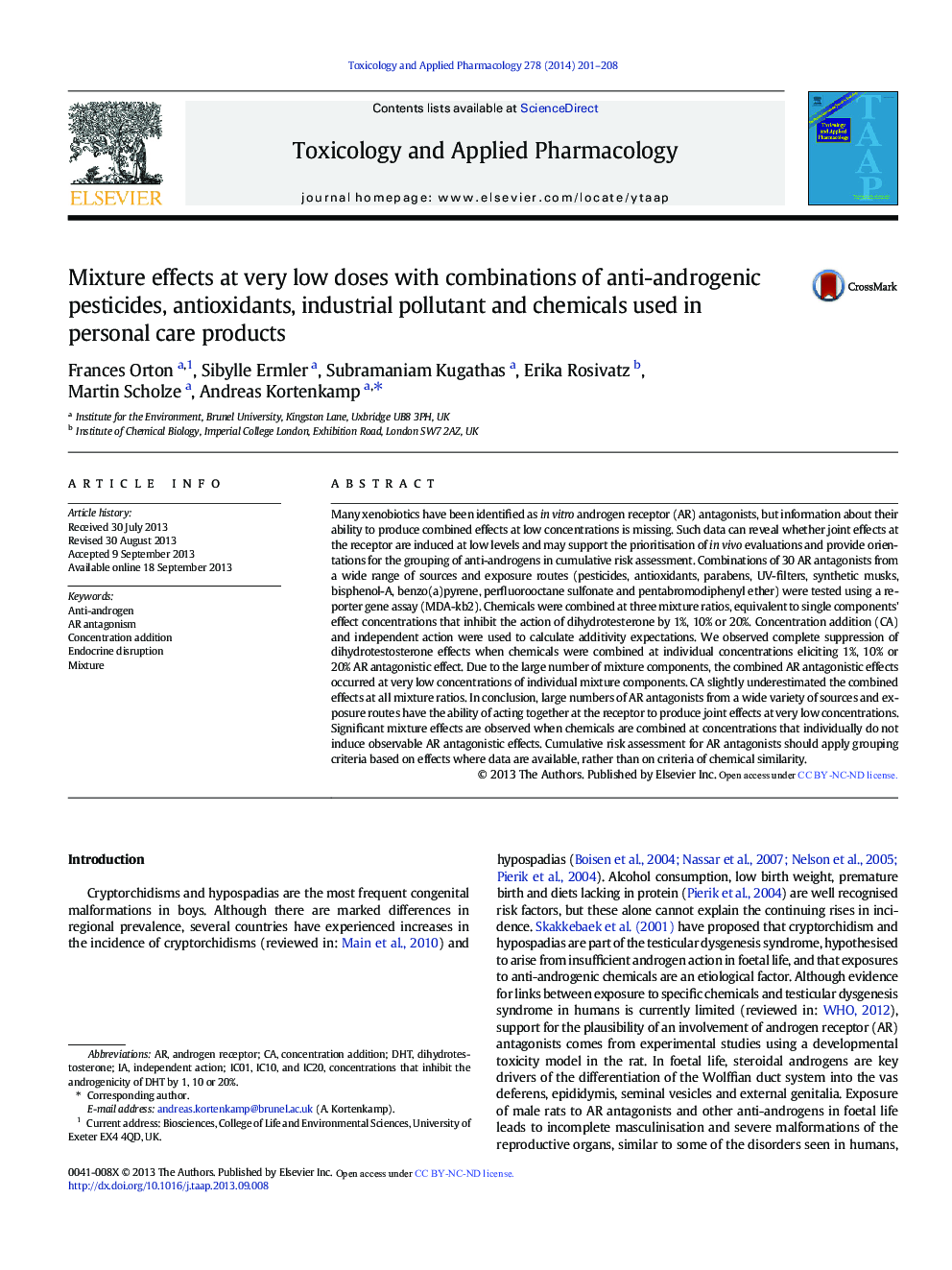| کد مقاله | کد نشریه | سال انتشار | مقاله انگلیسی | نسخه تمام متن |
|---|---|---|---|---|
| 5846173 | 1128457 | 2014 | 8 صفحه PDF | دانلود رایگان |
- Mixtures of AR antagonists at low individual concentrations cause complete inhibition.
- Concentration addition was an appropriate prediction model for observed effects.
- Risk assessment for AR antagonists should use grouping criteria based on effects.
Many xenobiotics have been identified as in vitro androgen receptor (AR) antagonists, but information about their ability to produce combined effects at low concentrations is missing. Such data can reveal whether joint effects at the receptor are induced at low levels and may support the prioritisation of in vivo evaluations and provide orientations for the grouping of anti-androgens in cumulative risk assessment. Combinations of 30 AR antagonists from a wide range of sources and exposure routes (pesticides, antioxidants, parabens, UV-filters, synthetic musks, bisphenol-A, benzo(a)pyrene, perfluorooctane sulfonate and pentabromodiphenyl ether) were tested using a reporter gene assay (MDA-kb2). Chemicals were combined at three mixture ratios, equivalent to single components' effect concentrations that inhibit the action of dihydrotesterone by 1%, 10% or 20%. Concentration addition (CA) and independent action were used to calculate additivity expectations. We observed complete suppression of dihydrotestosterone effects when chemicals were combined at individual concentrations eliciting 1%, 10% or 20% AR antagonistic effect. Due to the large number of mixture components, the combined AR antagonistic effects occurred at very low concentrations of individual mixture components. CA slightly underestimated the combined effects at all mixture ratios. In conclusion, large numbers of AR antagonists from a wide variety of sources and exposure routes have the ability of acting together at the receptor to produce joint effects at very low concentrations. Significant mixture effects are observed when chemicals are combined at concentrations that individually do not induce observable AR antagonistic effects. Cumulative risk assessment for AR antagonists should apply grouping criteria based on effects where data are available, rather than on criteria of chemical similarity.
Journal: Toxicology and Applied Pharmacology - Volume 278, Issue 3, 1 August 2014, Pages 201-208
